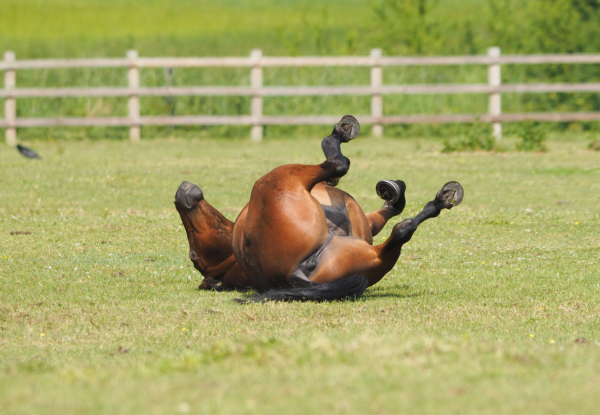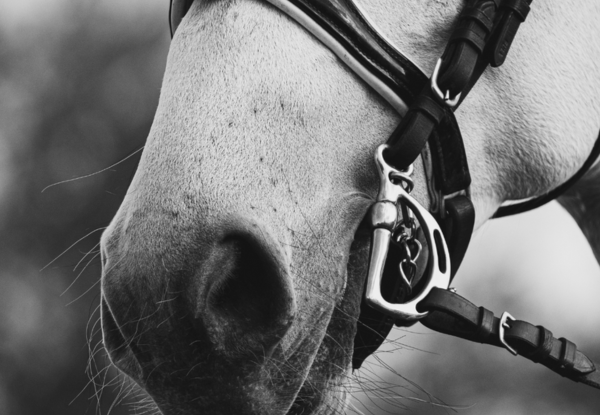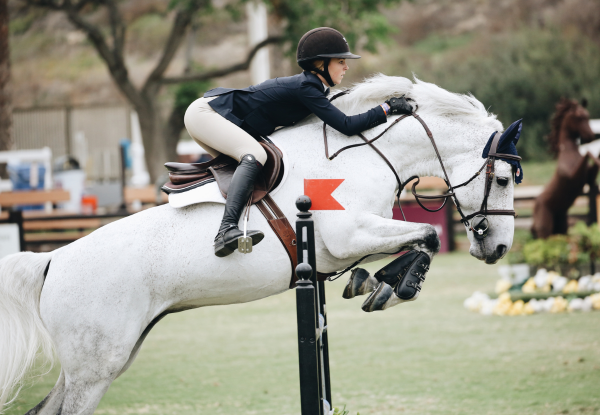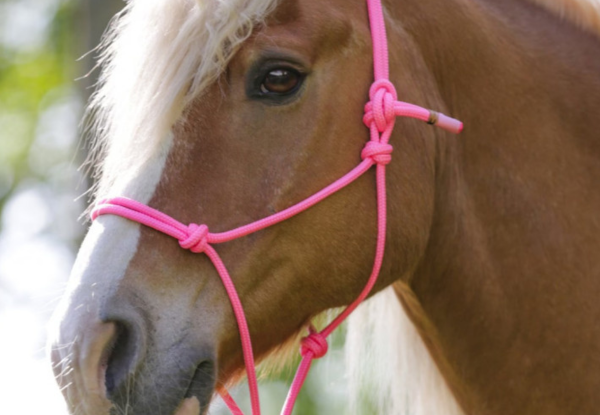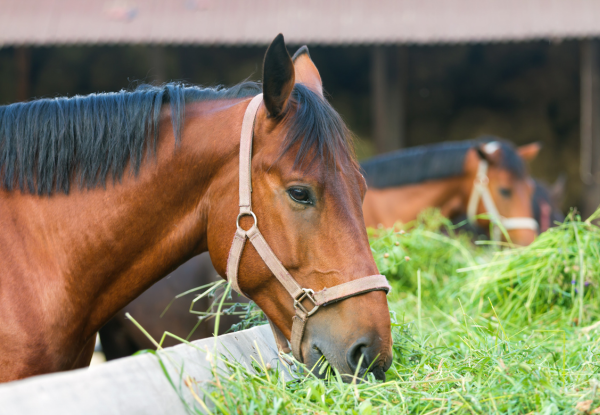Do you really know how horses sleep? It's not just a fun fact: knowing it helps improve their well-being. A...
Equestrian Endurance & Events
The ultimate guide to equestrian Endurance competitions: How to excel in the world of long-distance riding
Equestrian endurance is a thrilling sport that combines the endurance of both the horse and the rider, testing their stamina, skill, and strategy across long distances. In endurance riding, it’s not just about speed; it’s about pacing, the relationship between horse and rider, and the ability to navigate various types of terrain while ensuring the horse's health.
This article is for anyone interested in equestrian endurance competitions, whether you are a novice preparing for your first ride or an experienced competitor looking to improve your performance. We'll cover the most important aspects of the sport, including endurance rides, preparation tips, and how to stay updated on major competitions like the FEI endurance events.
1. What Is equestrian Endurance and why is it important?
Equestrian endurance is a long-distance sport where horses and riders must cover vast distances, typically ranging from 40 km to 160 km, in a single day. The endurance ride tests not only the horse's physical strength but also the rider’s ability to manage pace, navigate varying terrains, and ensure the horse’s welfare throughout the ride.
This sport of endurance riding is crucial in the equestrian world because it emphasizes the health and fitness of both horse and rider. It also promotes a strong bond between them, as trust and communication are key to successfully completing an endurance competition.
2. How do Endurance competitions work?
Endurance competitions are typically divided into several stages, and each rider and horse team must complete a predetermined distance within the competition's time limit. The distances can vary widely:
-
Shorter distances: 16 km to 40 km, which are often designed for novice riders or less experienced horses.
-
Long-distance rides: These can range from 80 km to 160 km, challenging both horse and rider to the limit.
During the endurance ride, the horse's condition is regularly monitored through veterinary checks. These checkpoints ensure that the horse is healthy, with an appropriate heart rate, and capable of continuing. The winner of the competition is not necessarily the fastest but the team that finishes with the healthiest horse.
3. How do you prepare for an Endurance ride?
Preparation for an endurance competition is a mix of strategic training, proper nutrition, and careful planning. Here's what to consider when preparing for an endurance ride:
-
Training the Horse: Horses need to build stamina and strength through gradual increases in distance over time. Training on varying terrain is important to simulate race conditions.
-
Fitness of the Rider: A rider must also be in good physical condition. Endurance riding requires core strength, balance, and stamina to maintain control over long distances.
-
Nutrition and Hydration: Both horse and rider need proper nutrition. For horses, a diet rich in fiber and electrolytes is essential to maintain their strength and hydration during the ride.
Good preparation ensures both horse and rider are fit and ready to tackle any long-distance riding event.
4. What types of horses excel in Endurance competitions?
Not all horses are suited for endurance competitions. The most successful endurance horses are those that combine stamina, speed, and soundness.
-
Arabians are by far the most popular breed in endurance riding, thanks to their natural stamina, strong cardiovascular system, and lightweight frame.
-
Crossbreeds involving Arabians are also common, as they often inherit the endurance traits while improving size or strength for longer distances.
-
Fitness and Stamina: Whatever the breed, a successful endurance horse is one that has been well-trained, is in excellent health, and has the mental toughness to handle the rigors of competition.
The choice of horse plays a critical role in how well a team can compete in long-distance riding events.
5. What role does the rider play in Endurance riding?
The rider’s role in an endurance competition is not just to guide the horse but to act as a strategic partner. Here’s what a rider needs to keep in mind:
-
Pacing: A successful endurance rider knows how to pace their horse to avoid exhaustion. This involves understanding the horse’s limits and knowing when to push for speed and when to slow down.
-
Health Monitoring: Riders must constantly monitor their horse’s condition, especially during veterinary checks. Ensuring the horse’s health is maintained is crucial for completing the race.
-
Terrain Navigation: Riders must adapt to varying terrain, whether it’s rough, flat, or steep. Good navigation and anticipation of the terrain help preserve the horse’s energy.
The rider is just as important as the horse in determining success in an endurance competition.
6. How are Endurance horses trained for long-distance rides?
Training an endurance horse requires time, patience, and careful planning. Here are the key components of an effective training program:
-
Building Endurance: Start with shorter rides, gradually increasing the distance as the horse’s stamina improves. Focus on building both cardiovascular strength and muscular endurance.
-
Training on Various Terrains: The horse must be accustomed to a variety of terrains—from flat stretches to hills and rocky paths. This ensures they are prepared for any racecourse.
-
Recovery and Rest: Proper recovery periods between training sessions are crucial. Overtraining can lead to fatigue or injury, while adequate rest helps build fitness.
An endurance horse needs to be prepared for the unique challenges of long-distance riding, with a training regime that balances fitness and recovery.
7. How does the terrain affect Endurance competitions?
The terrain is one of the most significant factors in any endurance competition. Riders must be prepared for diverse landscapes, which can make or break a long-distance ride. Here’s how terrain impacts endurance:
-
Rough Terrain: Rocky or uneven terrain requires careful navigation and slower speeds to avoid injuring the horse.
-
Flat Terrain: This allows for faster paces but can be deceptive, as maintaining speed over a long stretch of flat ground can exhaust a horse if not managed properly.
-
Climbing and Descending: Uphill stretches demand extra effort from the horse, while downhill segments require caution to prevent injury.
Understanding and adjusting to the terrain is vital for a successful endurance ride.
8. What are the veterinary checks in Endurance competitions?
In endurance competitions, horse welfare is the top priority. Veterinary checks are mandatory at several stages during a race. These checks assess the horse's ability to continue safely.
-
Heart Rate Monitoring: One of the most important metrics is the horse's heart rate. If it doesn’t drop below a specific threshold within a set time, the horse may be disqualified.
-
Soundness and Recovery: Vets also assess the horse's overall condition, including hydration levels, lameness, and fatigue. A horse showing signs of distress or poor recovery is pulled from the competition.
-
Compulsory Rest: After certain checkpoints, horses are required to rest, allowing them to recover and ensuring that they are fit to continue.
The veterinary checks serve as a safeguard, ensuring that no horse is pushed beyond its limits during an endurance competition.
9. How can you improve your Endurance performance?
Improving performance in endurance riding comes down to consistent training, strategic planning, and attention to both horse and rider health. Here are some tips:
-
Pace Yourself: Knowing when to push and when to conserve energy is crucial. Experienced endurance riders often succeed because they maintain a steady pace that preserves the horse’s stamina.
-
Monitor Horse Health: Keep a close eye on your horse’s heart rate and recovery time during training. This will help you assess fitness and make adjustments as needed.
-
Invest in Proper Gear: Quality saddles, tack, and footwear make a big difference in comfort for both horse and rider over long distances.
With the right approach, you can enhance both your own performance and your horse’s endurance in this challenging sport.
Key takeaways:
-
Endurance riding is a unique and challenging equestrian sport that tests both horse and rider over long distances.
-
Preparing for an endurance competition requires building stamina, managing nutrition, and adapting to different terrains.
-
Monitoring the horse's health through veterinary checks and ensuring proper training is crucial for success.
-
Understanding and participating in key events like the FEI World Endurance Championships can elevate your competitive experience.
-
Strategy, pacing, and attention to detail are key to improving performance in equestrian endurance.
Whether you’re new to endurance riding or a seasoned competitor, this equestrian sport offers exciting challenges and the opportunity to develop a deep bond with your horse while pushing both to their limits.
-
 The Equitime® Endurance Brand: a story of passion and innovation born in AbruzzoRead more
The Equitime® Endurance Brand: a story of passion and innovation born in AbruzzoRead moreDiscover the story of Equitime® Endurance: an Italian brand born from the passion of those who live Endurance every day.
-
 7th Raid Città della Pieve: rain, mud and adrenalineRead more
7th Raid Città della Pieve: rain, mud and adrenalineRead moreCittà della Pieve opens the 2025 endurance season with the 7th International Raid: with bad weather and conquered podiums, Equitime was a key player on and off the field
-
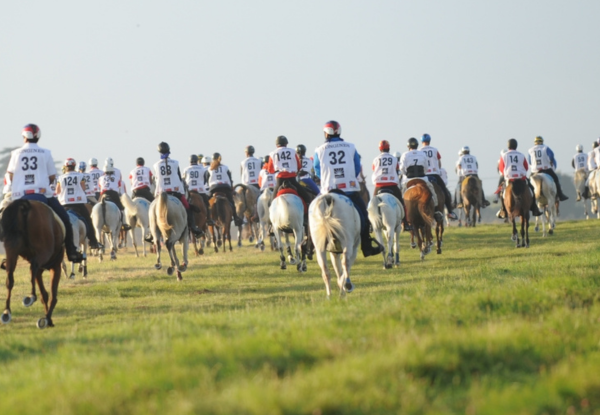 Arezzo Ride 2025: News from EquitimeRead more
Arezzo Ride 2025: News from EquitimeRead moreEquitime kicks off the 2025 season by participating in the Festival Terre Toscane at the Arezzo Equestrian Centre. This international Equestrian Endurance event will offer unique thrills and the chance to discover the brand’s latest innovations in advance.
-
 2024: A Year of challenges and successes for EquitimeRead more
2024: A Year of challenges and successes for EquitimeRead more2024 has been a year of remarkable achievements for Equitime and some of its ambassadors, who stood out with extraordinary victories like Carla Mosti's European title and Sabrina Arnold's 6th place at the World Championship. The comfort of our saddles, the MAJA and DUNA models, played a key role in achieving these outstanding results. For 2025, we are ready to aim even higher: new products, events, and increasingly technical and personalized services.2024: Un anno di sfide e successi per...
-
 Recap 2024: A Year of Endurance Between Italy and France with EQUITIMERead more
Recap 2024: A Year of Endurance Between Italy and France with EQUITIMERead more2024 saw EQUITIME shine in 10 Endurance races across Italy and France, achieving significant milestones at the prestigious events of Compiègne and Monpazier. Our products, combining innovation with the craftsmanship of Made in Italy, accompanied riders to extraordinary results. The Maja and Duna saddles stood out for their superior comfort and performance. With the same spirit of innovation, EQUITIME continues to look ahead, ready to face new challenges in the world of Endurance.
.png)
.png)

